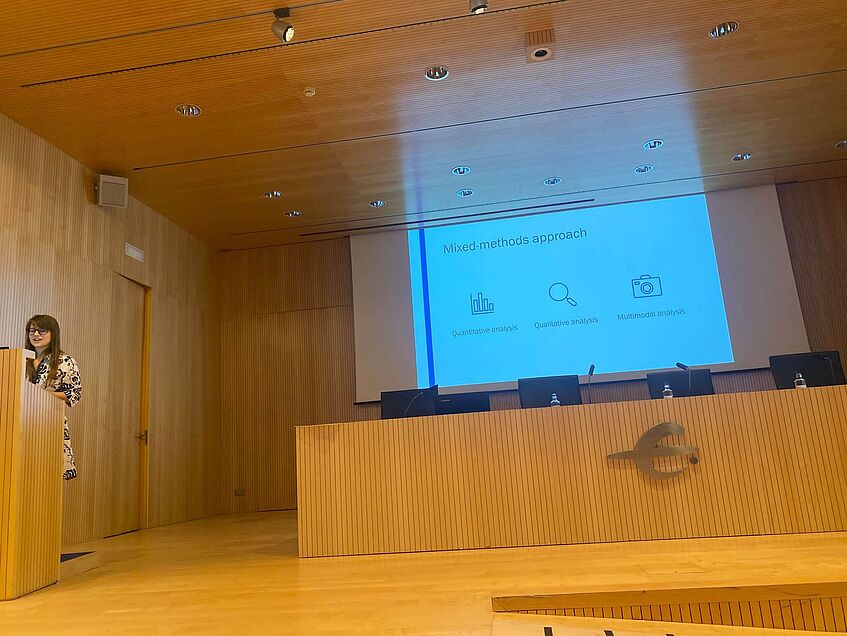Balancing credibility and persuasion: A mixed-methods approach to the genre analysis of annual reports of financial institutions across four global regions

Sophia Kaltenecker at the AELFE-LSPPC Conference in Zaragoza (2023)

Verena Grau, Sophia Kaltenecker, Lisza-Sophie Neumeier & Ute Smit at the AELFE-LSPPC Conference in Zaragoza (2023)
Presentation by Sophia Kaltenecker at the AELFE-LSPPC International Conference, June 28-30, 2023 in Zaragoza, Spain
Abstract:
As a publicly and generally digitally available genre, annual reports play a crucial role in a company’s communication with its shareholders and aim to fulfill a dual purpose of informing and persuading their readers (Ditlevsen, 2012). The resulting challenge of displaying optimism while not diminishing the corporation’s credibility is particularly crucial for financial institutions always aiming to project security and dependability, leading to the question of “How do annual reports of financial institutions attempt to fulfill their persuasive purpose while not jeopardizing their presupposed credibility?”.
After relying on previous research to identify lexico-grammatical and multimodal features associated with emphasizing credibility and facilitating persuasion, a mixed-methods approach was applied to analyzing annual reports from 2021 by financial institutions across four regions (i.e., the EU, the Asia-Pacific region, Latin America, Southern Africa). Following a quantitative analysis of first-person pronouns, the passive voice, and overused semantic domains related to evaluatives, intensifiers, and lexemes denoting strength, the qualitative analysis classified occurrences of first-person pronouns and passive voice according to process types. The subsequent multimodal analysis relying on Forceville’s (2014) adaptation of the Relevance Theory determined common themes and implications of images at the beginning of annual reports.
The analysis revealed that annual reports of financial institutions on a global scale, and, specifically, messages by or in the name of the corporation’s leadership, likely rely on a core set of strategies to fulfill their dual purpose. However, the extent to which the different features are used may vary, demonstrating that some institutions prefer a more objective tone compared to others facilitating a more personal tone. These differences, which are likely influenced by the creators’ individual linguacultural backgrounds and the corporate culture in addition to the geographical region, may also be relevant to financial institutions and future Business English courses.
Keywords: ESP, genre analysis, credibility, persuasion
References:
Ditlevsen, M. G. (2012). Telling the story of Danisco’s annual reports (1935 through 2007- 2008) from a communicative perspective. Journal of Business and Technical Communication, 26(1), 92-115. https://doi.org/10.1177/1050651911421132
Forceville, C. (2014). Relevance theory as model for analysing visual and multimodal communication. In D. Machin (Ed.), Visual communication (4th ed.) (pp. 51-70). De Gruyter. https://doi.org/10.1515/9783110255492.51
Kaltenecker, S. K. (2022). Balancing credibility and persuasion: A genre analysis of annual reports of financial institutions across different regions (Master’s thesis, University of Vienna). U:theses. https://utheses.univie.ac.at/detail/65425
